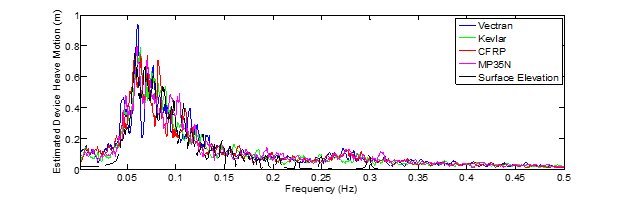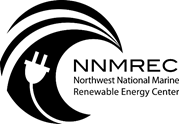The design and analysis of single point power-mooring cables applied to wave energy converters (WECs) is presented. WECs are mechanical devices designed and deployed to extract energy from waves with different methodologies and distances from the shoreline. WEC devices operating on the water surface require mooring lines or cables to anchor to the ocean floor. The mooring cable could also function as energy transmission from the WEC to shore. A mooring cable design process is proposed, and effects on cable properties of cable cross-sectional layout, material selection, and conductor design are investigated. The study focuses on cable design and structural material, however manufacturing and cable termination are also considered to ensure production feasibility. Combinations of six cable configurations and four structural materials were studied for a total of 18 different designs. The structural materials used for the study, chosen for significant strength and fatigue properties, included Vectran HS, Kevlar 49, Carbon fibers in a vinyl ester matrix, and MP35N alloy. Copper was used as the electrical conductor material in all cable configurations.
Results showed that structural component configuration had minimal impact on cable properties, while electrical component design, material used, and component helical angle exhibited significant effects on overall cable mechanical properties. Synthetic fiber designs demonstrated more desirable cable mechanical properties and fatigue performance than carbon fibers in a vinyl ester matrix and MP35N alloy. Wave device heave motion and cable tension were not significantly affected by cable design or material. Cable termination requirements caused certain configurations to be impractical, while current cable manufacturing equipment, such as cabling, stranding, braiding, and extruding was found to be applicable to the proposed designs.

This project aimed to study the feasibility of fiber-composite electro-mechanical mooring cables for wave energy converters through the design and analysis of various cable materials and configurations. Cables were designed to meet single point mooring requirements of a small generic 100 Kw wave energy converter and operate as the entire mooring assembly to evaluate single point power-mooring cable designs. WECs are held in position and constrained dynamically by a system of cables, anchors, sinkers and floats. Different WEC designs may require specific mooring systems and according to device dynamics for power generation, one or many cables may be required. Transferring generated power to shore requires a special type of cable called an Electro-Mechanical cable, which combines electrical transmission lines (Electro) with load bearing lines (mechanical) to form a cable to transfer mechanical and electrical loads.

Currently WECs which operate with only a single structural cable require both a mechanical and electrical cable. Infrastructure (ground and device connection points) for the mechanical and electrical cables of the system must be installed for each device resulting in high installation costs, and increased impact on the ocean environment. The results of this study can be applied to simplify and reduce the economic and environmental cost of the WEC's systems, and increase the viability of wave energy as a possible energy source.
An iterative design process was created in which relevant design requirements were established, applied, then updated as new designs were created and modeled. The process started by setting allowable load limits for cable components then estimating hydrodynamic and electrical loads to design structural and electrical components of the cable. Design hydrodynamic loads were found by modeling 100 year storm conditions, the WEC device, and chain or electro-mechanical cable in a non-linear finite element solver and simulating 20 minutes of device operation. The iterative design process was stopped when estimated loads of a design did not require a redesign of the cable.

Electrical loads were based on actual electrical cable design requirements used for real world cables associated with the selected WEC device. Vectran, Kevlar, carbon fibers reinforced plastic, and MP35N were examined in this study to evaluate composite structural components and compare them to commonly used metals. Copper was employed as the electrical component for all configurations for a clear comparison of structural materials. Six cable configurations and four materials were investigated, leading to 18 total designs.

The 18 designs were compared based on cable weight, cable diameter, cable strength, fatigue life, maximum cable loading, minimum bend radius, and cable effects on device motion under operating conditions. Changes in cable design caused no significant changes in cable performance, while changes in the structural material showed a clear trend of improving cable performance with increasing structural material stiffness. Neither design nor material caused significant differences in cable tension spectra, or device motion spectra.

Tensile fatigue, creep, hysteresis heating, and abrasion were investigated during this study. Vectran was found to have the longest fatigue life, followed by Kevlar, then Carbon Fiber, then finally MP35N with the worst tensile fatigue life. All of the structural materials investigated were found to have creep rates of near zero under the considered loading conditions. Hysteresis heating and abrasion could be mitigated through the use of barrier materials and lubrication.
Results of this study showed that using higher modulus structural materials leads to more desirable cable properties, but greatly reduces expected service life. Because of this tradeoff material should be selected based on required service life rather than cable performance. Section design of the cable showed insignificant impact on cable general performance, however it could have relevant influence on manufacturing costs.
The authors wish to thank Oregon BEST for funding, as well as the Northwest National Marine Renewable Energy Center and Oregon State University for support.


